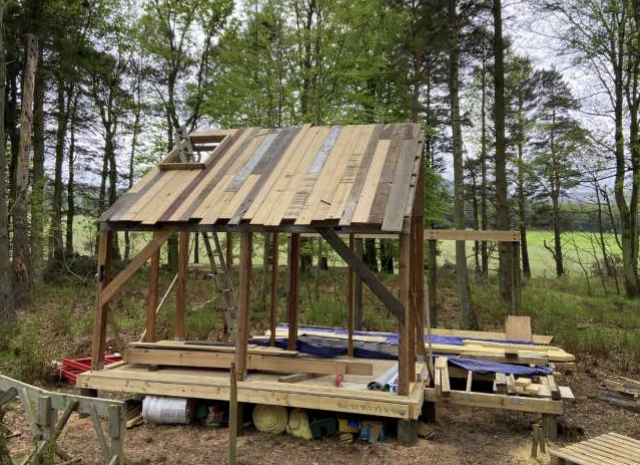Definition of a hut in Scottish Planning Policy:
‘A hut: A simple building used intermittently as recreational accommodation (i.e. not a principal residence”; having an internal floor area of no more than 30m2; constructed from low impact materials; generally not connected to mains water, electricity of sewerage; and built in such a way that it is removable with little or no trace at the end of its life. Huts may be built singly or in groups’.
To hut, or not to hut: that is the question. We appreciate that building a hut is a luxury; we also see that hutting has an impact on the material world (on the human world too, but that’s for another day).

We yearn for the woods, the space, the quiet, the shelter; to be unplugged and light the fire. We know that being in nature increases our wellbeing. We know that the skills gained and labour put to building a hut yield rewards uncommon and unexpected in everyday life.
We build with timber, glass, steel, and probably plastic. These materials have their own stories, their own industrial origins, their own histories of forest and logging and processing and shipping, their own roles in the fraught drama of human and environment.
Wouldn’t it be wonderful to build a hut of re-used, re-claimed, and scrounged materials? It’s an exciting challenge. It’s wonderfully rewarding. It’s a way to give new value and purpose to old things. It’s a way to reduce the impact of our activities. We can start to level up the balance between the luxury of having a hut, and the cost this has on the planet. It gives us an opportunity to set an example of how to do things differently, and it drives a wedge (however thin) into the accustomed way of building things.
In this talk I’d like to share my experiences of wood working in the mode of re-use, re-cycle, and scrounge. Because we’re here to talk about huts, I’ll focus for the most part on the construction of my family’s hut. I’ll take you on a few tangents to talk about my experience of sourcing used stuff and how to make what you want and need out of it. I hope to make the case that old stuff is better, is kinder to the environment, and is entirely more rewarding to work with and have as a finished product. I’ll also make a case for using local materials when old stuff isn’t working out or isn’t to be found, no matter how keen the scrounging eye.